#Nepalese Market
Explore tagged Tumblr posts
Text

Tata Motors Nepal | SK 1613 Medium & Heavy Commercial Vehicle - Specs & Features
Explore Tata Motors SK 1613, a versatile medium and heavy commercial vehicle in Nepal. Discover its specifications, features, and performance capabilities. Find your ideal truck today.
#Tata Motors#Nepal#SK 1613#Commercial Vehicles#Medium Trucks#Heavy Trucks#Specifications#Features#Performance#Nepalese Market
0 notes
Text




Marketplace weekend officially successful! And extremely delicious.
Featuring salmon with potatoes and vegetables with garlic sauce from Lapland and Belgian waffle, Nepalese butter chicken and... uh... whatever "rahkamunkki" translates into (with chocolate chips and a side coffee).
Noms not pictured: Italian pizza, German cheese pretzel, Spanish churros, and some more rahkamunkki for takeaway because I love them.
Non-nommable loot (because I just got my first paycheck on friday and the self control to match. In my defense I actually needed some of them): two new hats (one plain, the other with some grungy decorations), a deer antler with a minor pathology, merino wool socks and cashmeer-and-silk scarf (so, so, SO soft! Also matches my convention hood thingy so I could maybe use the scarf as a belt with it).

The annual four-day international market is back in town!
Started the food sampling weekend easy with some marketplace crepes and hot chocolate (it started raining partway to my exploration, and the stand was the closest with covered tables, and the crepes are good so that's bonus!)
Also got myself a new hat, as I broke my old work hat a while ago and needed a replacement.
#man I've missed nepalese food so much#the plague killed my fave nepalese AND indian places and I haven't found good replacements yet#the antler was an impulse purchase but is was the cheapest non-reindeer antler the stall had#reindeer antlers are a lot easier to get here as they're semi-domesticated in Lapland#and I already have those#(also did quite a bit of people watching/tattoo spotting)#Wish I could design characters a fraction as interesting as there are people visiting the market!#and man I love seeing so many tattoos of different kinds on display#I may or may not be dreaming of a new one...#man I love tattoos
38 notes
·
View notes
Text
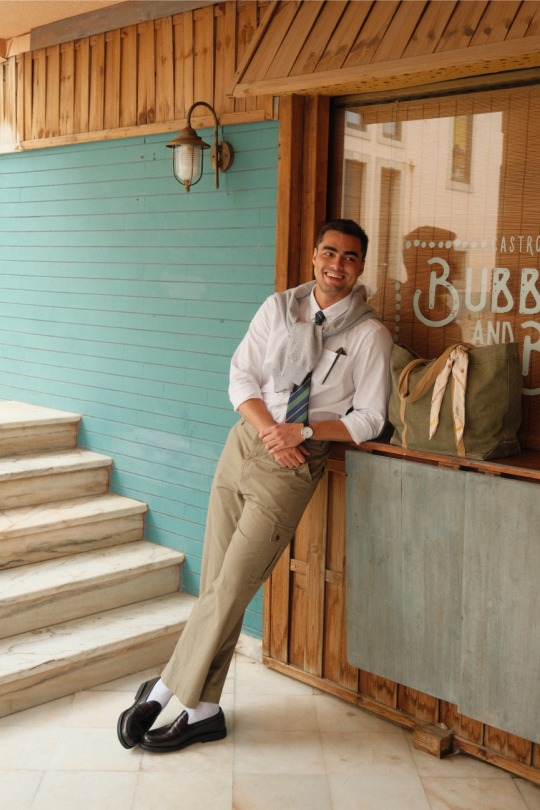
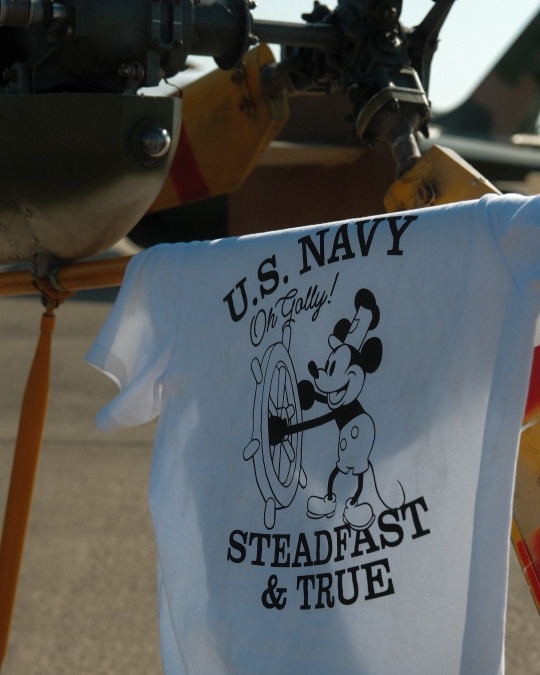
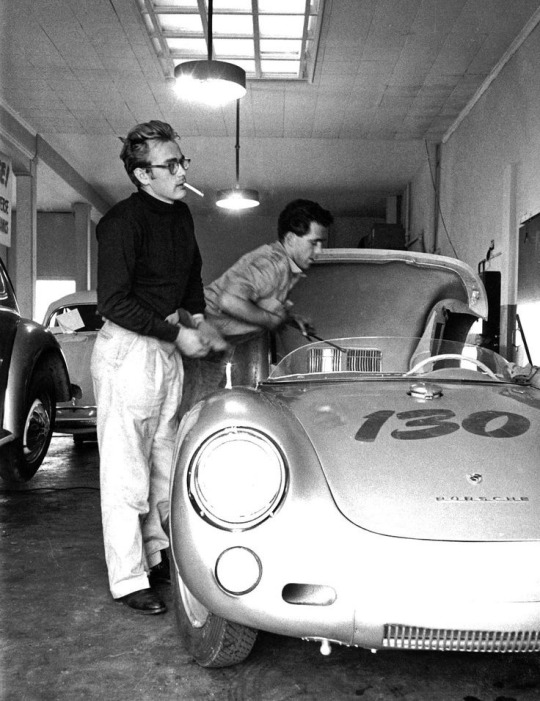
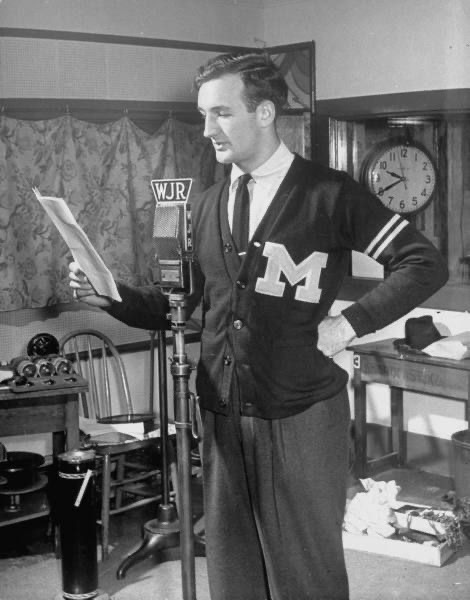
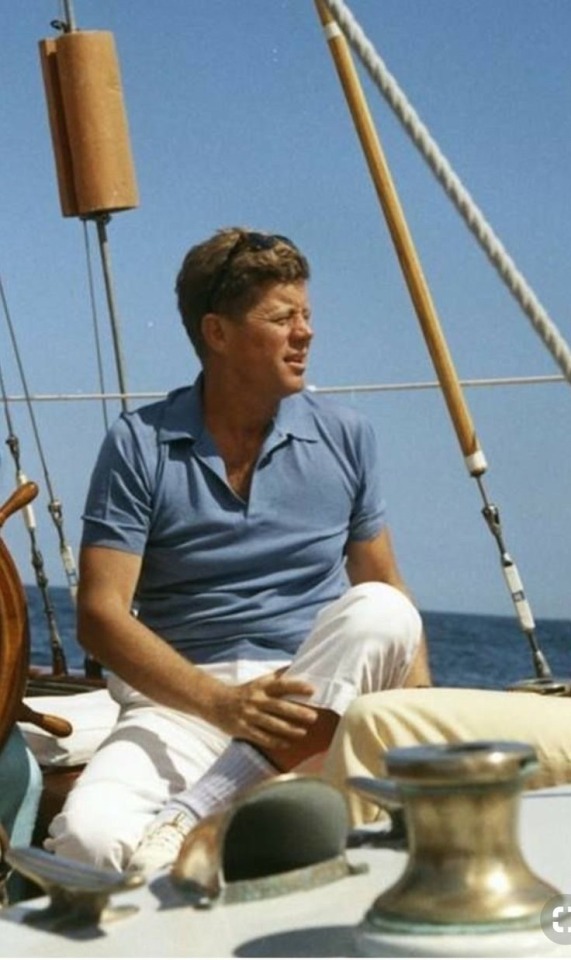


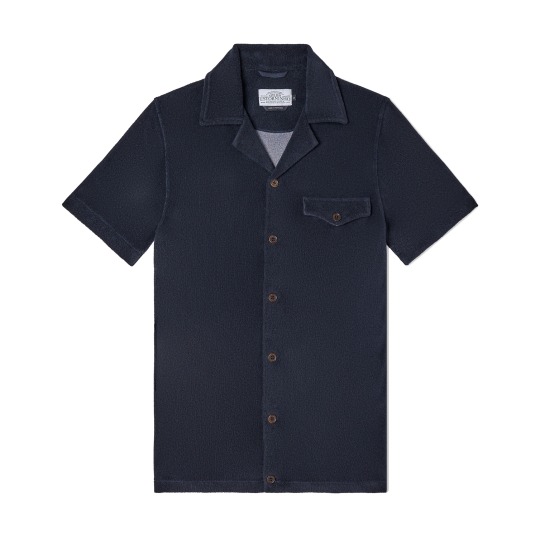
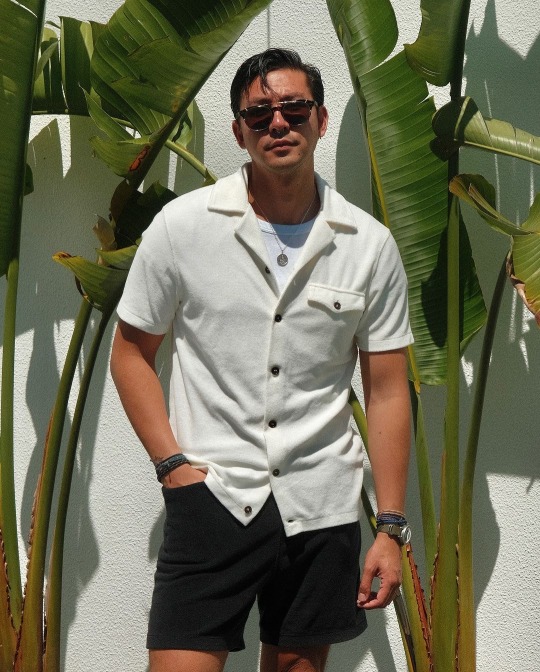
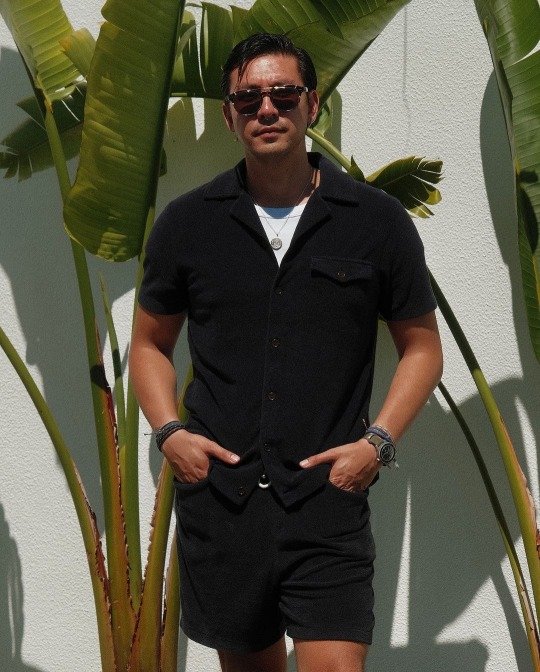
Brands to Know: Atelier Estorninho
Portugal is renowned for its fashion industry worldwide, with some the leadi ng fashion labels producing in its collections here due to the vast know-how and expert craftsmanship. It’s a fact that the quality/price ratio is virtually unmatched, what might lead us to think that we’d have a burgeoning market for new designers and independent fashion brands to pave their way into the mainstream market. However, that is not the case here, as let’s admit it, we lack the branding capacity to make it happen and government support is solely focused on massive scale internationalization.
Nonetheless, every now and then a new name pops that caughts the attention on both local and international markets with the prime players being Portuguese Flannel, La Paz and more recently, Ernest W Baker. As you may know by now if you’ve following me for a while, I’m a sucker for promoting local quality products and projects and on this note, today I bring you and up and coming label that has been gaining momentum in the local scene: Atelier Estorninho.
Inspired by a retro-vintage meets military aesthetic, Estorninho has been consistently putting out interesting designs that are thoroughly tested before hitting the shelves, a philosophy I can relate with including in my own project. I reached out to Hugo, the brands founder, to learn a bit more about his vision of contemporary menswear
1 - Hi Hugo. Can you tell us a bit more about what lead you to create this eponymous label?
The creation of Atelier Estorninho was driven by a desire to blend my personal interests in classic timeless garments, vintage aesthetics and military-inspired fashion with modern textile technology. I wanted to bring a unique perspective to the industry, offering pieces that are not only stylish but also functional and timeless.
2 - Do you come from a fashion background or is it born out of pure passion?
While I don't have a traditional fashion background, I do have a strong foundation in design. Since I was a kid, I always dreamed of pursuing a creative career. I was obsessed with video games like Medal of Honor, action figures like G.I. Joes and war movies, and I often funnily geared up in camouflage in kindergarten. My passion for creativity and design, combined with my fascination with military aesthetics, naturally led me to start my own label. Although I've never had any formal classes related to fashion, my journey into this field is fueled by pure passion and a lifelong love for innovative and expressive design. I've always been fascinated by how fashion can tell a story and express individuality, which motivated me to start my own label.
3 - You have a keen eye to create stand out pieces with heavy military influence but that simultaneously merge preppy elements. What inspired you to go this way?
The inspiration comes from a love of classic military uniforms and their functionality combined with the refined, versatile and polished look of preppy style. I wanted to create a fusion that captures the best of both worlds – ruggedness and elegance.
Specific army uniforms that have influenced my designs include the US Army's OG 107 uniforms issued during the Vietnam War, named after their color (Olive Green, shade 7). These uniforms inspired the cut of my cargo trousers and the rear patch pockets with flap closures. Another significant influence is the Gurkha shorts used by the British military, named after the fierce Nepalese soldiers. The wide fit of these shorts inspired the silhouette for my Ivy Chino Shorts.
Additionally, my Ivy Chino Trousers are inspired by the French Military M-52 trousers, known for their back flap pockets and shallow pleats. These trousers were adopted by the French army in 1952, during a time when iconic designers like Christian Dior, Balenciaga, and Chanel were active, marking the golden age of French fashion. This era also saw significant events such as the China War and the Algerian War, where military force played a crucial role. The M-52s were created in this historical context and were mass-produced as French uniforms for about a decade.
On the preppy side, the reason I named many of my clothing items "Ivy" is because I am very interested in the clothing worn on college campuses during the late 1950s in the Northeastern United States, particularly those of the Ivy League. These institutions were the predecessors of preppy style, and I wanted to embody the lifestyle of someone who lived in an Ivy League school environment. This includes a shared dorm room and a small wardrobe that demands a carefully curated selection of items elegant enough for classes, lectures, and school events, but also comfortable, stylish, and versatile enough for adolescent life—whether wrestling around at the park with friends or grabbing a beer at the bar. These clothes are meant to be reliable companions in every situation. My Ivy League Cardigan is inspired by the cardigans worn during that era too, but combining it's charm with a cozy feeling of a hoodie by utilising jersey fabric instead and kangaroo pockets, just like your favourite hoodie.
By merging these historical military elements, preppy charm and modern fabrics, I hope to create distinctive and versatile pieces that stand out.
4 - What would you say are the trademark features of an Atelier Estorninho item?
Simple: Timeless charm, deliberate craftsmanship, premium materials.
5 - You approach each design carefully, releasing limited styles and runs at a time. Is this a necessity due to the scale of the brand or a business model in itself?
It's both a strategic choice and a practical necessity. Being the sole designer, I take a hands-on approach to every aspect of the creation process—I love every bit of it, but it's a ton of work! Although I have a small team, this setup enables me to produce meticulously crafted items that stand out and ensures each piece meets exacting standards for quality and timeless design. Limiting our runs isn't just about enhancing exclusivity; it's about managing production sustainably and staying true to my commitment to quality over quantity.
6 - What’s your favourite item in the collection and why?
My favorite item would have to be our signature military-inspired Ivy Chino Shorts. They perfectly encapsulate the brand’s ethos, combining quality, practicality, and versatility with style. The attention to detail and the story behind their design make them a standout piece in the collection. Features like the double pleats, side waist adjusters, and flexible cotton fabric ensure comfort and ease of movement. The deep front slanted pockets and two back pockets with flaps provide convenient storage where your items won’t fall out. These shorts can be dressed up or down thanks to their classic and elegant cut. The use of Spanish luxury cotton fabric, Italian corozo buttons, and patterned pocket liners add a fine, luxurious touch to the detail.
7 - We seem to share a common passion for unique trouser styles. In your opinion, what makes trousers so special?
Trousers are a cornerstone of any outfit, second only to shoes in their visual impact. They have the power to transform the overall look and feel of an ensemble. For me, investing in high-quality trousers is crucial; I'd prefer to pair a $100 pair of trousers with a $10 t-shirt rather than the reverse.
I have very specific rules for trousers: the leg opening shouldn't be tight on the ankle, but rather sit at least half the length of your feet. This ensures a comfortable fit and a balanced silhouette. I also prefer high-waisted trousers with a long fly on a man, as this enhances a man's physique and silhouette, providing a classic and flattering look. Additionally, a straight cut for a standard fit is my go-to, as it offers timeless elegance and versatility.
Personally, I prefer pleats for suit trousers and chinos, as they add a touch of elegance and functionality, providing extra room and comfort. For jeans, selvedge denim is my fabric of choice due to its durability and classic appeal. The meticulous craftsmanship involved in creating selvedge, indigo dyed denim results in a superior product that ages beautifully over time.
One of the reasons I focus so much on trousers is that they need to be both stylish and functional. People often tell me how much they appreciate the practical elements, such as deep pockets and durable fabrics, alongside the aesthetic appeal. For example, my cargo trousers, feature rear patch pockets with flap closures that are both stylish and highly functional. Additionally, the preppy influence in my designs, particularly seen in my Ivy Chino Trousers, offers a versatile option that fits seamlessly into various settings, from casual to more formal occasions, you'll always look appropriate and stylish.
Trousers not only provide structure and style but also offer versatility and comfort. They carry a lot of personality in a look, more than any graphic t-shirt ever can in my opinion. Their design, fabric, and fit can dramatically enhance personal style and make a strong fashion statement. The right pair of trousers can elevate any ensemble.
8 - You recently launched a capsule collection at The Feeting Room. What are the future plans in terms of collections and brand evolution?
I plan to continue exploring new design ideas and collaborations, maybe diving deeper into functionality, timelessness, and style. I aim to create clothing that is practical and comfortable for traveling or everyday errands, yet elegant. This includes incorporating classic visual influences, durable construction, functional pockets, and using natural and luxury fabrics.
For the long term, I hope to continue capturing an essence of timeless masculine charm, balancing ruggedness and elegance. Maybe including a women's collection too, with a different approach that merges seamlessly with the brand. I hope to expand internationally and eventually open a flagship store. I hope to create memorable pieces in my customers' wardrobes, prioritizing owning less but owning better.
9 - Where can we get your items?
Our collections are available at select boutiques, including The Feeting Room, and through our online store. We also participate in pop-up events and fashion fairs, which are great opportunities for customers to experience our brand in person.
#menswear#men's fashion#men's style#style#fashion#inspiration#beyond fabric#atelier estorninho#brands to know#collection#details#lookbook
49 notes
·
View notes
Text
Atrocities US committed against ASIA
Between 1996-2006, The US has given money and weapons to royalist forces against the nepalese communists in the Nepalese civil war. ~18,000 people have died in the conflict. In 2002, after another civil war erupted, President George W. Bush pushed a bill through Congress authorizing $20 million in military aid to the Nepalese government.
In 1996, after receiving incredibly low approval ratings, the US helped elect Boris Yeltsin, an incompetent pro-capitalist independent, by giving him a $10 Billion dollar loan to finance a winning election. Rather than creating new enterprises, Yeltsin’s democratization led to international monopolies hijacking the former Soviet markets, arbitraging the huge difference between old domestic prices for Russian commodities and the prices prevailing on the world market. Much of the Yeltsin era was marked by widespread corruption, and as a result of persistent low oil and commodity prices during the 1990s, Russia suffered inflation, economic collapse and enormous political and social problems that affected Russia and the other former states of the USSR. Under Yeltsin, Between 1990 and 1994, life expectancy for Russian men and women fell from 64 and 74 years respectively to 58 and 71 years. The surge in mortality was “beyond the peacetime experience of industrialised countries”. While it was boom time for the new oligarchs, poverty and unemployment surged; prices were hiked dramatically; communities were devastated by deindustrialisation; and social protections were stripped away.
In the 1970s-80s, wikileaks cables revealed that the US covertly supported the Khmer Rouge in their fight against the Vietnamese communists. Annual support included an end total of ~$215M USD, food aid to 20-40k Khmer Rouge fighters, CIA advisors in several camps, and ammunition.
In December 1975, The US supplied the weaponry for the Indonesian invasion of East Timor. This incursion was launched the day after U.S. President Gerald Ford and Secretary of State Henry Kissinger had left Indonesia where they had given President Suharto permission to use American arms, which under U.S. law, could not be used for aggression. Daniel Moynihan, U.S. ambassador to the UN. said that the U.S. wanted “things to turn out as they did.” The result was an estimated 200,000 dead out of a population of 700,000. Sixteen years later, on November 12, 1991, two hundred and seventeen East Timorese protesters in Dili, many of them children, marching from a memorial service, were gunned down by Indonesian Kopassus shock troops who were headed by U.S.- trained commanders Prabowo Subianto (son in law of General Suharto) and Kiki Syahnakri. Trucks were seen dumping bodies into the sea.
In 1975 Australian Constitutional Crisis, the CIA helped topple the democratically elected, left-leaning government of Prime Minister Gough Whitlam, by telling Governor-General, John Kerr, a longtime CIA collaborator, to dissolve the Whitlam government.
In 2018 after the release of a suppressed ISC (International Scientific Commission) report, and the release of declassified CIA communications daily reports in 2020, it was revealed that the US used germ warfare in the Korean war, 2. Many of these attacks involved the dropping of insects or small mammals infected with viruses such as anthrax, plague, cholera, and encephalitis. After discovering evidence of germ warfare, China invited the ISC headed by famed British scientist Joseph Needham, to investigate, but the report was suppressed for over 70 years.
Between 1963 and 1973, The US dropped ~388,000 tons of napalm bombs in vietnam, compared to 32,357 tons used over three years in the Korean War, and 16,500 tons dropped on Japan in 1945. US also sprayed over 5 million acres with herbicide, in Operation Ranch Hand, in a 10 year campaign to deprive the vietnamese of food and vegetation cover.
In 1971 in Pakistan, an authoritarian state supported by the U.S., brutally invaded East Pakistan in the Indo-Pakistani war of 1971. The war ended after India, whose economy was staggering after admitting about 10 million refugees, invaded East Pakistan (now Bangladesh) and defeated the West Pakistani forces. The US gave W. pakistan 411 million provided to establish its armed forces which spent 80% of its budget on its military. 15 million in arms flowed into W. Pakistan during the war. Between 300,000 to 3 million civilians were killed, with 8-10 million refugees fleeing to India.
In 1970, In Cambodia, The CIA overthrows Prince Sihanouk, who is highly popular among Cambodians for keeping them out of the Vietnam War. He is replaced by CIA puppet Lon Nol, whose forces suppressed the large-scale popular demonstrations in favour of Sihanouk, resulting in several hundred deaths. This unpopular move strengthens once minor opposition parties like the Khmer Rouge (another CIA supported group), who achieve power in 1975 and massacres ~2.5 million people. The Khmer Rouge, under Pol Pot, carried out the Cambodian Genocide, which killed 1.5-2M people from 1975-1979.
In 1969, The US initiated a secret carpet bombing campaign in eastern Cambodia, called, Operation Menu, and Operation Freedom Deal in 1970. An estimated 40,000 - 150,000 civilians were killed. Nixon lied about this campaign, but was later exposed, and one of the things that lead to his impeachment.
US dropped large amounts of Agent Orange, an herbicide developed by monsanto and dow chemical for the department of defense, in vietnam. Its use, in particular the contaminant dioxin, causes multiple health problems, including cleft palate, mental disabilities, hernias, still births, poisoned breast milk, and extra fingers and toes, as well as destroying local species of plants and animals. The Red Cross of Vietnam estimates that up to 1 million people are disabled or have health problems due to Agent Orange.
US Troops killed between 347 and 504 unarmed civilians, including women, children, and infants, in South Vietnam on March, 1968, in the My Lai Massacre. Some of the women were gang-raped and their bodies mutilated. Soldiers set fire to huts, waiting for civilians to come out so they could shoot them. For 30 years, the three US servicemen who tried to halt the massacre and rescue the hiding civilians were shunned and denounced as traitors, even by congressmen.
In 1967, the CIA helped South Vietnamese agents identify and then murder alleged Viet Cong leaders operating in villages, in the Phoenix Program. By 1972, Phoenix operatives had executed between 26,000 and 41,000 suspected NLF operatives, informants and supporters.
In 1965, The CIA overthrew the democratically elected Indonesian leader Sukarno with a military coup. The CIA had been trying to eliminate Sukarno since 1957, using everything from attempted assassination to sexual intrigue, for nothing more than his declaring neutrality in the Cold War. His successor, General Suharto, aided by the CIA, massacred between 500,000 to 1 million civilians accused of being communist, in the Indonesian mass killings of 1965-66. The US continued to support Suharto throughout the 70s, supplying weapons and planes.
Between 1964 and 1973, American pilots flew 580,000 attack sorties over Laos, an average of one planeload of bombs every eight minutes for almost a decade. By the time the last US bombs fell in April 1973, a total of 2,093,100 tonnes of ordnance had rained down on this neutral country. To this day, Laos, a country of just 7 million people, retains the dubious accolade of being the most heavily bombed country in the world per capita.
From the 1960s onward, the US supported Filipino dictator Ferdinand Marcos. The US provided hundreds of millions of dollars in aid, which was crucial in buttressing Marcos’s rule over the years. The estimated number of persons that were executed and disappeared under President Fernando Marcos was over 100,000. After fleeing to hawaii, marco was suceeded by the widow of an opponent he assasinated, Corazon aquino.
Starting in 1957, in the wake of the US-backed First Indochina War, The CIA carries out approximately one coup per year trying to nullify Laos’ democratic elections, specifically targeting the Pathet Lao, a leftist group with enough popular support to be a member of any coalition government, and perpetuating the 20 year Laotian civil war. In the late 50s, the CIA even creates an “Armee Clandestine” of Asian mercenaries to attack the Pathet Lao. After the CIA’s army suffers numerous defeats, the U.S. drops more bombs on Laos than all the U.S. bombs dropped in World War II. A quarter of all Laotians will eventually become refugees, many living in caves. This was later called a “secret war,” since it occurred at the same time as the Vietnam War, but got little press. Hundreds of thousands were killed.
In 1955, the CIA provided explosives, and aided KMT agents in an assassination attempt against the Chinese Premier, Zhou Enlai. KMT agents placed a time-bomb on the Air India aircraft, Kashmir Princess, which Zhou was supposed to take on his way to the Bandung Conference, an anti-imperialist meeting of Asian and African states, but he changed his travel plans at the last minute. Henry Kissinger denied US involvement, even though remains of a US detonator were found. 16 people were killed.
From 1955-1975, the US supported French colonialist interests in Vietnam, set up a puppet regime in Saigon to serve US interests, and later took part as a belligerent against North Vietnam in the Vietnam War. U.S. involvement escalated further following the 1964 Gulf of Tonkin incident, which was later found to be staged by Lyndon Johnson. The war exacted a huge human cost in terms of fatalities (see Vietnam War casualties). Estimates of the number of Vietnamese soldiers and civilians killed vary from 966,000 source to 3.8 million.source Some 240,000–300,000 Cambodians,source23 20,000–62,000 Laotians,4 and 58,220 U.S. service members also died in the conflict, with a further 1,626 missing in action. Unexploded bomb continue to kill civilians for years afterward.
In the summer of 1950 in South Korea, anticommunists aided by the US executed at least 100,000 people suspected of supporting communism, in the Bodo League Massacre. For four decades the South Korean government concealed this massacre. Survivors were forbidden by the government from revealing it, under suspicion of being communist sympathizers. Public revelation carried with it the threat of torture and death. During the 1990s and onwards, several corpses were excavated from mass graves, resulting in public awareness of the massacre.
In 1984, documents were released showing that Eisenhower authorized the use of atomic weapons on North Korea, should the communists renew the war in 1953. The 2,000 pages released show the high level of planning and the detail of discussion on possible use of these weapons, and Mr. Eisenhower’s interest in overcoming reluctance to use them.
In the beginning of the Korean war, US Troops killed ~300 South Korean civilians in the No Gun Ri massacre, revealing a theater-wide policy of firing on approaching refugee groups. Trapped refugees began piling up bodies as barricades and tried to dig into the ground to hide. Some managed to escape the first night, while U.S. troops turned searchlights on the tunnels and continued firing, said Chung Koo-ho, whose mother died shielding him and his sister. No apology has yet been issued.
The US intervened in the 1950-53 Korean Civil War, on the side of the south Koreans, in a proxy war between the US and china for supremacy in East Asia. South Korea reported some 373,599 civilian and 137,899 military deaths, the US with 34,000 killed, and China with 114,000 killed. Overall, the U.S. dropped 635,000 tons of bombs—including 32,557 tons of napalm—on Korea, more than they did during the whole Pacific campaign of World War II. The US killed an estimated 1/3rd of the north Korean people during the war. The Joint Chiefs of staff issued orders for the retaliatory bombing of the People’s republic of China, should south Korea be attacked. Deadly clashes have continued up to the present day.
From 1948-1949, the Jeju uprising was an insurgency taking place in the Korean province of Jeju island, followed by severe anticommunist suppression of the South Korean Labor Party in which 14-30,000 people were killed, or ~10% of the island’s population. Though atrocities were committed by both sides, the methods used by the South Korean government to suppress the rebels were especially cruel. On one occasion, American soldiers discovered the bodies of 97 people including children, killed by government forces. On another, American soldiers caught government police forces carrying out an execution of 76 villagers, including women and children. The US later entered the Korean civil war on the side of the South Koreans.
In 1949 during the resumed Chinese Civil War, the US supported the corrupt Kuomintang dictatorship of Chiang Kaishek to fight against the Chinese Communists, who had won the support of the vast majority of peasant-farmers and helped defeat the Japanese invasion. The US strongly supported the Kuomintang forces. Over 50,000 US Marines were sent to guard strategic sites, and 100,000 US troops were sent to Shandong. The US equipped and trained over 500,000 KMT troops, and transported KMT forces to occupy newly liberated zones as well as to contain Communist-controlled areas. American aid included substantial amounts of both new and surplus military supplies; additionally, loans worth hundreds of millions of dollars were made to the KMT. Within less than two years after the Sino-Japanese War, the KMT had received $4.43 billion from the US—most of which was military aid.
The U.S. installed Syngman Rhee,a conservative Korean exile, as President of South Korea in 1948. Rhee became a dictator on an anti-communist crusade, arresting and torturing suspected communists, brutally putting down rebellions, killing 100,000 people and vowing to take over North Korea. Rhee precipitated the outbreak of the Korean War and for the allied decision to invade North Korea once South Korea had been recaptured. He was finally forced to resign by mass student protests in 1960.
Between 1946 and 1958, the US tested 23 nuclear devices at Bikini Atoll, using the native islanders and their land as guinea pigs for the effects of nuclear fallout. Significant fallout caused widespread radiological contamination in the area, and killed many islanders. A survivor stated, “What the Americans did was no accident. They came here and destroyed our land. They came to test the effects of a nuclear bomb on us. It was no accident.” Many of the islanders exposed were brought to the US Argonne National laboratory, to study the effects. Afterwards the islands proved unsuitable to sustaining life, resulting in starvation and requiring the residents to receive ongoing aid. Virtually all of the inhabitants showed acute symptoms of radiation syndrome, many developing thyroid cancers, Leukimia, miscarriages, stillborn and “jellyfish babies” (highly deformed) along with symptoms like hair falling out, and diahrrea. A handful were brought to the US for medical research and later returned, while others were evacuated to neighboring Islands. The US under LBJ prematurely returned the majority returned 3 years later, to further test how human beings absorb radiation from their food and environment. The islanders pleaded with the US to move them away from the islands, as it became clear that their children were developing deformities and radiation sickness. Radion levels were still unacceptable. The United States later paid the islanders and their descendants 25 million in compensation for damage caused by the nuclear testing program. A 2016 investigation found radiation levels on Bikini Atoll as high as 639 mrem yr−1, well above the established safety standard threshold for habitation of 100 mrem yr−1. Similar tests occurred elsewhere in the Marshall Islands during this time period. Due to the destruction of natural wealth, Kwajalein Atoll’s military installation and dislocation, the majority of natives currently live in extreme poverty, making less than 1$ a day. Those that have jobs, mostly work at the US military installation and resorts. Much of this is detailed in the documentary, The Coming War on China (2016).
After the Japanese surrender in 1945, Douglas MacArthur pardoned Unit 731, a Japanese biological experimentation center which performed human testing of biological agents against Chinese citizens. While a series of war tribunals and trials was organized, many of the high-ranking officials and doctors who devised and respectively performed the experiments were pardoned and never brought to justice. As many as 12,000 people, most of them Chinese, died in Unit 731 alone and many more died in other facilities, such as Unit 100 and in field experiments throughout Manchuria. One of the experimenters who killed many, microbiologist Shiro Ishii, later traveled to the US to advise on its bioweapons programs. In the final days of the Pacific War and in the face of imminent defeat, Japanese troops blew up the headquarters of Unit 731 in order to destroy evidence of the research done there. As part of the cover-up, Ishii ordered 150 remaining subjects killed.
In 1945 during the month-long Battle of Manila, the US in deciding whether to attack Manila (then under Japanese occupation) with ground troops, decided instead to use indiscriminate carpet-bombing, howitzers, and naval bombardment, killing an estimated 100,000 people. The casualty figures show the US’s regard for filipino civilian life: 1,010 Americans, 16,665 Japanese and 100,000 to 240,000 civilians were killed. Manila became, alongside Berlin, and Warsaw, one of the most devastated cities of WW2.
US Troops committed a number of rapes during the battle of Okinawa, and the subsequent occupation of Japan. There were 1,336 reported rapes during the first 10 days of the occupation of Kanagawa prefecture alone.1 American Occupation authorities imposed wide-ranging censorship on the Japanese media, including bans on covering many sensitive social issues and serious crimes such as rape committed by members of the Occupation forces.
From 1942 to 1945, the US military carried out a fire-bombing campaign of Japanese cities, killing between 200,000 and 900,000 civilians. One nighttime fire-bombing of Tokyo took 80,000 lives. During early August 1945, the US dropped atomic bombs on Hiroshima and Nagasaki, killing ~130,000 civilians, and causing radiation damage which included birth defects and a variety of genetic diseases for decades to come. The justification for the civilian bombings has largely been debunked, as the entrance of Russia into the war had already started the surrender negotiations earlier in 1945. The US was aware of this, since it had broken the Japanese code and had been intercepting messages during for most of the year. The US ended up accepting a conditional surrender from Hirohito, against which was one of the stated aims of the civilian bombings. The dropping of the atomic bomb is therefore seen as a demonstration of US military supremacy, and the first major operation of the Cold War with Russia.
In 1918, the US took part in the allied intervention in the Russian civil war, sending 11,000 troops to the in the Arkhangelsk and Vladivostok regions to support the anti-bolshevik, monarchist, and largely anti-semitic White Forces.
In 1900 in China, the US was part of an Eight-Nation Alliance that brought 20,000 armed troops to China, to defeat the Imperial Chinese Army, in the the Boxer Rebellion, an anti-imperialist uprising.
In 1899, after a popular revolution in the Philippines to oust the Spanish imperialists, the US invaded and began the Phillipine-American war. The US military committed countless atrocities, leaving 200,000 Filipinos dead. Jacob H Smith killed between 2,500 to 50,000 civilians, His orders included, “kill everyone over the age of ten” and make the island “a howling wilderness.”
Throughout the 1800s, US settlers engaged in a genocide of native Hawaiians. The native population decreased from ~ 400k in 1789, to 40k by 1900, due to colonization and disease. In 1883, the US engineered the overthrow of Hawaii’s native monarch, Queen Lili’uokalani, by landing two companies of US marines in Honolulu. Due to the Queen’s desire “to avoid any collision of armed forces, and perhaps the loss of life” for her subjects and after some deliberation, at the urging of advisers and friends, the Queen ordered her forces to surrender. Hawaii was initially reconstituted as an independent republic, but the ultimate goal of the US was the annexation of the islands to the United States, which was finally accomplished in 1898. After this, the Hawaiian language was banned, English replaced it as the official language in all institutions and schools. The US finally apologized in 1993, but no land has been returned.
#japan#china#south korea#asia#kim jong un#russia#north korea#putin#anti capitalism#leftism#socialism#anarchy#communism#us history#american history#imperialism#ronald reagan#us politics#made in usa#america#maga#government#political#xitter#gop#late stage capitalism#classism#current events#economics#capitalism
81 notes
·
View notes
Text
The Missed(?) Connection
Here's a story about how fucking stupid life is.
When I worked in Manchester city centre I would commute in every day on the train from one of the market towns. This would have been c. 2014-2015, before I started having panic attacks about going to work but after I'd been written up for being 5-10 minutes late most mornings.*
Every morning I would walk up Deansgate from Deansgate Station to the office, stopping at a Sainsburys Local to buy breakfast. This particular morning I was late as usual, so the great migration had already browsed the foliage of yogurt bars and uninspiring sandwiches and thundered onwards; besides the store clerk there was only one other person in the shop with me.
Do you believe people can fall in love at first sight?
I did not believe any such thing, so it was QUITE THE SURPRISE to me when I did it.
Here is what I remember about her:
*She was wearing one of those Nepalese yak-wool jackets with the bright rainbow-dyed yarn they sell at the Christmas market every year. Most such garments end up smelling strongly of b.o. and weed stank, grimy and unravelling, but hers was bright and well kept, and she wore it over a short black skirt and tights and managed to achieve a kind of insouciant charm with it so marked that it didn't occur to me for years after that she might have been wearing the jacket for pride reasons.

*She was trans and white and straight-sized.
*Her hair was a well-chosen blonde that would look plausible on her when freshly colored, which at that moment it was not; her hairstyle was a layered cut no longer than her shoulders and in need of a trim.
*The fashion of the time called for contouring and false lashes, but instead she was wearing simple-looking makeup that suited her: black mascara and a lip color somewhere between red and berry. I remember the red of the lip color did not match the cheerful Sno-Cone red of the rainbow jacket but was perfect for her complexion.
*Her black ankle boots had mid heels--the thick sturdy kind of heel good for walking a mile or two in the city if your back doesn't hate you yet. She would have been a bit taller than I am even in stocking feet; the heeled boots took the length of her legs past enviable into devastating.
*She wore a few sterling silver rings, but not so many it looked like dress-up, which is the mistake I always make with them. I coveted at least one of the rings, but I no longer recall their motifs. Her hands were fine-boned, the nails unpainted, knuckles a bit raw and chapped pink, in need of hand cream; I found them enchantingly beautiful.
*I stood behind her while she paid for her breakfast. I recall thinking the style of her pocketbook was cool. I don't remember now what it looked like.
*Her face wore that mildly unhappy cast people's faces have when they're going to work in the mornings and haven't quite finished the process of stuffing away enough of their real life's problems to appear together and professional. Just ever so slightly fragile.
I had no contact with anyone queer in the country. To my knowledge I'd met three trans people in my whole life. I'd dated a grand total of one woman. All my other previous relationships had been with men.
And none of that mattered, because I was in love. Just like that.
I don't know how I knew, but I knew, and the certainty was simple and clear and easy: I knew I wanted to ask her to dinner, and I knew I wanted to know her on whatever terms she was comfortable being known. I knew I wanted to give her footrubs and brush her hair and ask her about her day and memorize which of her coworkers were giving her grief.
And I didn't ask her out. Because I was late for work. Late enough that it didn't matter if I stopped to get breakfast at the Sainsburys Local, but also late enough that if I stopped to talk to someone I'd be written up again.
I am sure you will agree that this sucks on multiple levels. For one thing it sucks that I was not a person worthy of her, a person not in danger of being fired, a person capable of getting to work on time more than 1 day in 4, a person who could afford to be late long enough to chat her up.
For another thing it's a bit Pink Floyd's The Wall that I was so beaten down by life I was financially and psychologically compelled to crush part of my soul, and who knows, maybe a shot at real love and a beautiful future, in order to remain employed.
It haunts me that there are things that I don't even know I don't know about myself, and that I experienced something that can't be explained, and of course most of all that I will never know whether that feeling of serendipity was accurate.
But the thing that really gets up my nose about this event, the thing that makes me think that any god that exists must be an evil motherfucker, is this:
The once-in-a-lifetime opportunity to try for something precious and true and my inability to meet that opportunity were the same moment, brought about by the same set of circumstances. If I hadn't been so late to work I couldn't stop to talk to her, I wouldn't have been in the shop at the same time she was. I would never have seen her.
*Improbably, I was unaware at the time that I had anxiety.
#falling in love#manchester#lgbtq#personal#sapphism#wlw#human rights#workers' rights#queer rights#clap for the nhs 🤮#pointless anecdotes#god is evil#bisexual#sapphic#that one moment when the ant dimly perceives the shape of the car tyre it's standing on just as the car starts moving#love at first sight
8 notes
·
View notes
Text

“Bhaktapur is the city in Nepal known for manufacturing pottery, woodcarvings, weavings, and various traditional art items that can be found in Asian markets. The country's manufacturing industry is woefully underdeveloped, as globalization has encouraged the Nepalese economy to focus on the service sector.”
From: “Nepal” by Bhattarai, Krishna; 2008.
39 notes
·
View notes
Text
Thess vs Food Stereotypes
Okay, really getting tired of this.
I didn’t want to hijack the post doing the rounds about “British kids try biscuits and gravy for the first time” and people getting judgemental about British cooking based on a few kids whose idea of ‘biscuit’ is very different than the American version and one British uni student’s aversion to spice. Thing is, though ... I live here, and I moved here from Canada (Montreal, even, which has a reputation for being as foodie as Paris but with a lot more politeness) by way of the United States. I’ve seen the stereotypes from all three countries, and when it comes to England, I’ve been everywhere from tiny hamlets to ... well, London, where I currently reside.
A lot of “traditional dishes” lack for spice here, true. However ... did y’all forget, while you were going, “American versions of recipes from other places have such flavour because poor / low class immigrants brought the recipes here”, that Britain was a fucking empire? We bitch about British colonialism all the time, and fair enough, but no one seems to have considered the huge variety of food that brought to this tiny wet little island. Even in the tiniest hamlets you’ll generally find an Indian takeaway, always family-run, always by families who came from the country from which the cuisine originated, some as recently as a generation ago. Bigger cities, and especially someplace like London? You’ll find a lot more. Hell, I live near an area that’s a blend of Afro-Caribbean, Nigerian, and Filipino, and the food you’ll find in the area reflects that. And I don’t just mean restaurants either; people who live here are clearly making that stuff at home, if the local markets are any indication. It’s the same all over, with a lot of emphasis on Indian, Pakistani, Nepalese, Filipino, and the foods of various African nations. Britain colonised these countries, and maybe the white people don’t make as much use of the spices they got by doing so as they could? But some do.
Also ... dude, they have herbs here. And they use them. Stews are full of thyme and sage and bay leaf. Sauces are a thing - mint for lamb, applesauce (not the sweet dessert kind; the kind where the tartness of the apple is maintained) for pork, fucking horseradish for beef. Root vegetables like parsnips and carrots are often roasted in a honey glaze, and never underestimate how a flavour profile changes if you change what fat you’re using for roasting a potato. (Seriously, just try roasting potatoes in goose fat.) Gravy? They have gravy; not as thick, and more generally devoted to the flavours of the juices of the roast, but they have gravy.
Britain has a different, earthier, occasionally sweeter flavour profile to a lot of its traditional dishes than other countries, yes. And there are a lot of people in this country who fear anything more than one clove of garlic, yes. However, there are Americans who fear anything that doesn’t taste of grease and mayonnaise, too (which is the stereotype, I’m afraid). So maybe can we lean less into the stereotype and, while trying unfamiliar foods, also do some research and try a variety of those unfamiliar foods instead of judging an entire country’s palate based on a couple of school kids who don’t know the American South’s version of a biscuit? Just be happy they’re loving it.
And go try some bubble and squeak sometime. Lancashire hot pot. Cornish pasty. Cullen skink. Hell, shepherd’s pie! It’s not all boiled everything, y’know.
43 notes
·
View notes
Text
Pithoragarh, nestled in the eastern part of Uttarakhand, India, is a hidden gem waiting to be explored by travelers seeking tranquility and natural beauty. Known for its panoramic views of the Himalayas and rich cultural heritage, Pithoragarh offers a refreshing alternative to the more touristy destinations in the region. Offbeat places in Pithoragarh provide a glimpse into the pristine landscapes, ancient temples, and a slower pace of life that characterize this enchanting hill district.

One of the lesser-known attractions in Pithoragarh offbeat places is the charming town of Munsiyari, situated at an elevation of 2,200 meters. Surrounded by snow-capped peaks and lush forests, Munsiyari is a paradise for trekkers and nature enthusiasts. The trek to nearby glaciers like Milam and Ralam offers breathtaking vistas and a chance to witness the raw beauty of the Himalayan wilderness.
For those interested in history and spirituality, Pithoragarh is home to the ancient Kapileshwar Mahadev Temple. Nestled amidst thick pine forests and perched on the banks of the Kali River, this centuries-old temple attracts devotees and history buffs alike. The serene ambiance and scenic surroundings make it a perfect spot for introspection and spiritual rejuvenation.
Another hidden gem in Pithoragarh offbeat places is Dharchula, a quaint town located on the Indo-Nepal border. Known for its rich cultural heritage and vibrant markets, Dharchula offers a unique blend of Indian and Nepalese influences. The town serves as a gateway to the Kailash-Mansarovar pilgrimage route and is surrounded by stunning Himalayan landscapes, making it a haven for adventure seekers and culture enthusiasts alike.
In conclusion, Pithoragarh offbeat places beckon travelers to step off the beaten path and explore the untouched beauty of Uttarakhand. Whether you're drawn to the majestic mountains, ancient temples steeped in history, or the cultural tapestry of border towns, Pithoragarh has something to offer every type of traveler. Embrace the serenity, immerse yourself in the local culture, and create memories that will last a lifetime in this captivating corner of India.
#clearholidays#pithoragarh#offbeat places#offbeat tourism#uttarakhand offbeat#india travel#india tourism#incredible india#pithoragarh offbeat places#offbeat places in pithoragarh
2 notes
·
View notes
Text
Best IT Companies In Nepal – Pagoda Labs
Are you in Nepal and searching for expert solutions in website development, app development, software development, or digital marketing? Pagoda Labs, listed among the top 5 IT companies in Nepal, is your trusted partner. Our services extend to key cities such as Kathmandu, Pokhara, Lalitpur, and Biratnagar, making us one of the top 5 IT companies in these regions.
As an established player in the Nepalese IT industry, Pagoda Labs is committed to delivering top-notch services that align with the latest industry trends. Whether you're a startup, small business, or enterprise, our team of skilled professionals ensures tailored solutions to meet your unique requirements.
From responsive and user-friendly website development to scalable applications, feature-rich software, and result-driven digital marketing, Pagoda Labs excels in delivering comprehensive services. Our expertise positions us among the top 5 IT companies in Nepal, emphasizing innovation and client satisfaction.
If you're specifically seeking digital marketing solutions, Pagoda Labs is also recognized among the top 5 digital marketing agencies in Nepal and Kathmandu. Choose Pagoda Labs as your technology partner, and let us empower your business with the latest advancements in the digital realm. Elevate your online presence, enhance user experiences, and achieve your business goals. Partner with us for a journey towards digital excellence in Nepal!
IT Companies in Nepal IT Companies in Kathmandu IT Companies in Pokhara IT Companies in Lalitpur IT Companies in Biratnagar Digital Marketing Agency in Nepal
Digital Marketing Agency in Kathmandu
#IT Companies in Nepal#IT Companies in Kathmandu#IT Companies in Pokhara#IT Companies in Lalitpur#IT Companies in Biratnagar#Digital Marketing Agency in Nepal#Digital Marketing Agency in Kathmandu
3 notes
·
View notes
Text
Scaling the Summit: A Journey to Island Peak
Nestled amidst the towering peaks of the Nepalese Himalayas, Island Peak stands as a formidable challenge for mountaineers seeking to test their skills and push their limits. Join me on an exhilarating adventure as we embark on a journey to conquer this iconic peak, experiencing the thrill of high-altitude climbing and the breathtaking beauty of the Himalayas along the way.
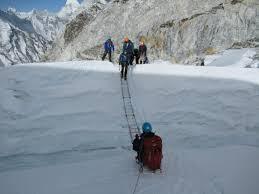
Day 1-2: Kathmandu to Lukla and Trek to Phakding Our expedition begins with a scenic flight from Kathmandu to Lukla, followed by a trek through picturesque villages and lush forests to the village of Phakding. As we make our way along the trail, we soak in the sights and sounds of the Himalayan landscape, feeling the excitement and anticipation building with each step.
Day 3-5: Trekking to Namche Bazaar and Acclimatization Continuing our trek, we make our way to the bustling Sherpa town of Namche Bazaar, where we spend a few days acclimatizing to the high altitude. During this time, we explore the local markets, visit ancient monasteries, and take short hikes to nearby viewpoints, allowing our bodies to adjust to the thin air and prepare ourselves for the challenges ahead.
Day 6-9: Trekking to Island Peak Base Camp With our acclimatization complete, we set out on the trail once again, trekking through rugged terrain and crossing icy streams as we made our way toward Island Peak Base Camp. Along the way, we pass through breathtaking landscapes, from lush valleys to barren moraines, with the towering peak of Island Peak dominating the horizon.
Day 10-12: Summit Day After days of preparation and anticipation, the time has come to make our summit push. We rise before dawn and begin our ascent under the light of the stars, navigating icy slopes and rocky terrain with the help of our experienced guides. As the sun rises over the Himalayas, we continue our ascent, fueled by determination and adrenaline, until finally, we stand on the summit of Island Peak, gazing out over a sea of peaks and valleys stretching to the horizon.
Day 13-15: Descending and Return to Lukla With our goal accomplished, we begin our descent back to Base Camp, where we celebrate our achievement and bid farewell to Island Peak. From there, we continue our trek back to Lukla, retracing our steps through the Himalayan landscape and reflecting on the incredible journey we've undertaken.
Conclusion: The climb to Island Peak is more than just a physical challenge—it's a test of courage, perseverance, and determination in the face of adversity. From the rugged beauty of the Himalayas to the thrill of standing on the summit, every moment of the expedition is a reminder of the indomitable spirit of adventure that lies within us all. As we return to Kathmandu and bid farewell to the mountains, we carry with us the memories of an unforgettable journey and the knowledge that we are capable of achieving greatness in the face of the unknown.
#IslandPeak#HimalayanAdventure#HighAltitudeClimbing#SummitExpedition#Wanderlust#TravelDiaries#BucketListExperiences#NatureLovers#AdventureTravel
2 notes
·
View notes
Text
New research by the Landworkers’ Alliance, Sustain and others has raised serious concerns about exploitation of Nepalese workers in the UK horticulture sector. The 60-page report, called “Debt. Migration and Exploitation”, examines the recruitment practices and working conditions of seasonal fruit and veg pickers employed under the UK government’s Seasonal Worker scheme. Some Nepalese workers are having to pay extortionate, illegal broker fees of around £4,300 to third-party recruitment agencies in their home countries to secure a visa. One young woman paid £12,000, according to worker testimony included in the study. This means after paying for accommodation, subsistence and travel costs, they are left out of pocket and pay more to come to the UK and work than the retained income they take home. The report includes an extended interview with a former Nepalese worker recruited to work in the UK via a Seasonal Worker scheme visa, who says around 70-80% of workers are paying illegal broker fees. The worker states: “Many people do not know how to use the internet for applications, how to use it properly, how the process works. There is a lack of information everywhere about recruitment, and a lack of education. The brokers are 10 steps ahead of the candidates. The brokers make them victims, they take people for fools." The report also includes a supply chain analysis carried out by the New Economics Foundation, of a fruit farm in Kent. It estimates migrant seasonal workers picking soft fruit receive an average of 7.6% of the total retail price of this farm’s produce. The supermarket receives 54.7% of the value, while the farm receives 26.2%. In 2022, Nepalese migrants accounted for 8% of Seasonal Worker scheme recruits. Ukraine supplied the most workers (20%), down from 90% in 2019 due to the ongoing conflict with Russia. The report concludes with key recommendations for the UK government, labour market enforcement bodies, supermarkets, trade unions and social movements. These include recruiting through one authorised department of the origin countries of workers, cutting out brokers and middlemen, and the establishment of information centres to spread correct information on the process. A UK government spokesperson said “The welfare of visa holders is of paramount importance, including in the Seasonal Workers scheme, and we are clamping down on poor working conditions and exploitation. We work closely with scheme operators who have responsibility for ensuring the welfare of migrant workers, requiring them to provide at least 32 hours paid employment per week and managing the recruitment process overseas. We will always take decisive action where we believe abusive practices are taking place or the conditions of the route are not met"
Love that the government's response seems to be "look we're trying to fix it honest we are"
10 notes
·
View notes
Text

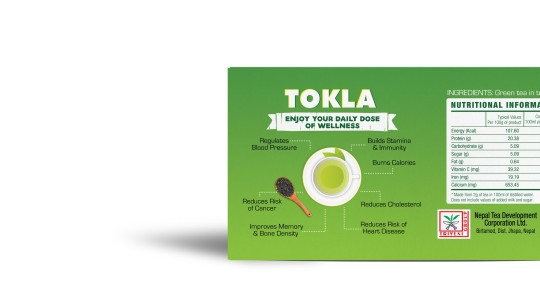

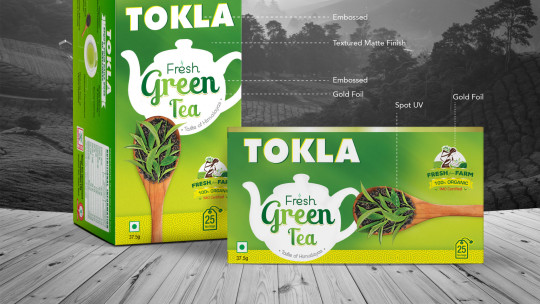
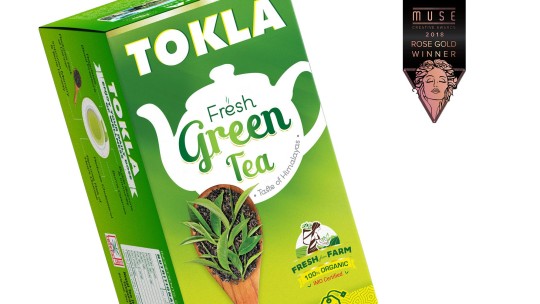



Almond Branding, a well-known design and branding agency in india, has taken on the task of redesigning the packaging and branding for a 150-year-old green tea brand from Nepal. This brand carries with it a rich heritage and history that has been passed down through generations, making it an important part of the Nepalese culture.
The challenge for Almond Branding was to create a design that reflected the brand's rich history while also appealing to modern consumers. They needed to strike a balance between maintaining the brand's traditional values and updating the design to make it more appealing to today's market.
To achieve this, Almond Branding conducted extensive research into the brand's history and heritage, as well as the current market trends in the tea industry. They used this information to create a design that incorporated traditional Nepalese elements, such as the country's iconic Himalayan mountains and intricate patterns, while also using modern typography and color schemes to make the packaging more visually appealing.
The result is a beautiful and elegant packaging design that pays homage to the brand's heritage while also appealing to a modern audience. Almond Branding has managed to create a design that is both visually stunning and deeply meaningful, capturing the essence of the brand and its history. This is a testament to the agency's creativity, attention to detail, and commitment to preserving the value of a brand's heritage.
Revamp Of Nepal's 150 Year Old Tea Brand
The Brand Tokla is as old as the tea industry in Nepal. With this 150 year old heritage, its not surprising that the name Tokla has become synonymous to tea or Chia as its locally known in Nepal.
The brand has a variety of offerings from regular CTC tea, premium long leaf, Masala tea and the likes and has recently ventured into Green tea to reach out to the rapidly growing health conscious audience in the Himalayan country. However, the packaging of Green tea badly needed a facelift inorder to appeal to this slightly different discerning audience.
Decoding The Brand Equity
There has been a few attempts made locally to modernize the pack but they had failed miserably, each time resulting into dip in sales as they had swayed away too much from the family of Tokla.
The range from Tokla had a characteristic dark green colour with Tokla branding in white and our research showed that the masses in Nepal identified the brand with this colour codes. We also observed that there is a ‘not-tobe-missed’ white teacup right at the centre of each pack.
The key challenge was not to deviate far from the parent Tokla Design language and yet connote the modern and premium offering to an evolved audience.
The Design Solution
Our proposed approach was three fold
Retain brand Tokla boldly on green at top Take advantage of Trust & Heritage as well as familiarity
Bring in premiumization with design elements and a strong Visual Hook for recall Reach out to the evolved sensibilities of the evolved consumer
Convey the Freshness and Organic certifications and claims on Front of Pack(FOP) Back it up with health benefits on the Back of Pack (BOP)
Design Inspiration : Elements & Patterns
Almond Branding used its proprietary Brand Nomenclature process to coin a new Brand Name that will stand true to the ethos of the company. The company with its strong focus on technology and consumer centricity has been striving to bring the most innovative offerings to the consumer
Category: Food & Beverage Services: Branding | Packaging Design
2 notes
·
View notes
Text
I grew up in my home state 'Delhi', the National Capital Territory of India also known as 'Dilli dil walon ki", which has some lip-smacking food. From your chatpata street food to budget-friendly to fine dining. I Will be sharing my top 5 of my favourites and not-so-known restaurants and cafes that you can visit with your family, friends and loved ones in the Delhi capital.
Lha Kitchen:
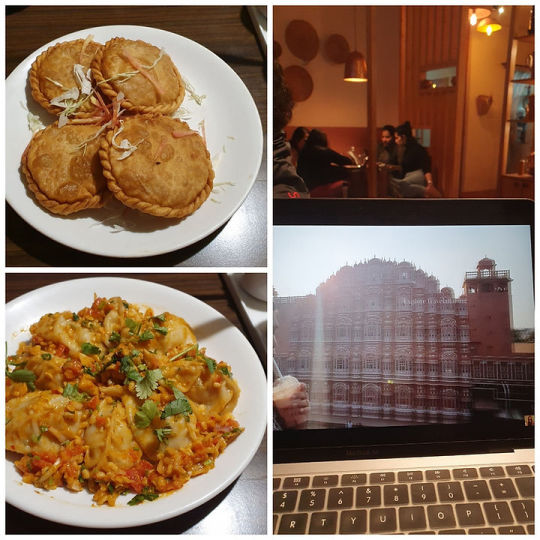
Lha Kitchen focuses on 4
different cuisines-Tibetan, Nepalese, Bhutanese and Chinese. This place has 22 varieties of momos veg/non-veg. Other than momos they have some interesting Tibetan butter tea, mushroom Datsi and Tin Mo.
I tried their Chicken shape Which had a crispy outer layer with chicken filling inside. Make sure to enjoy spicy chutney which will make you crave more. Next, I ordered
Sandekho Momos or I should say 'Momos ki chat', was extremely flavourful and chatpata.
Location: 168,1st floor, Humayunpur, Safdarjung Enclave, New Delhi, Delhi 110029
Cost for 2: Rs 600 /-
Paul, Vasant Kunj:
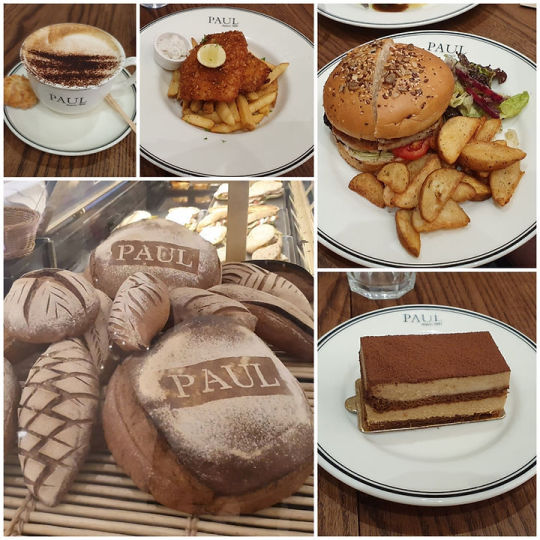
Paul has 2 outlets all over Delhi, one is in Vasant Kunj ambience mall, and the second one is in Gurgaon Ambience mall. If you want to eat and dine in an authentic European way with world-class service then Paul should be on the top list. I love eating their fish and chips, Chicken burgers, and pizza. If you are a coffee lover then don't forget to try their coffee.
Location
Vasant kunj: UG-28A, Ambience Mall, Nelson Mandela Marg, Vasant Kunj, Delhi 110070
Gurgaon: G-1 , Ground Floor ,Ambience Mall, Sector 24, Gurugram, Haryana 122022
Cost for 2: Rs 1400/-
YooMee

If you love Pan- Asian Cuisine along with Japanese Manga comic strips. Enjoy with Ramen, Sushi and yummy Dim Sums then this place should be on the top list of yours. By far this is the only place in Delhi I am aware of, where I have tried Veg sticky rice (and I love it that). This place has won my heart in terms of price, quality and quality.
Fun fact- this is the first place where I tried sushi for the first time, and my experience was just amazing.
My personal Recommendations are Konjee crispy lamb, Crunchy chicken dumpling,
Char siu pork belly, Tom Yum soup veg
Location: E Block Rd M27, Ground Floor, Block M, Market, Greater Kailash, New Delhi, Delhi 110048
Cost for 2: Rs 900 to 1000
CHÔ Vietnamese Kitchen & Bar
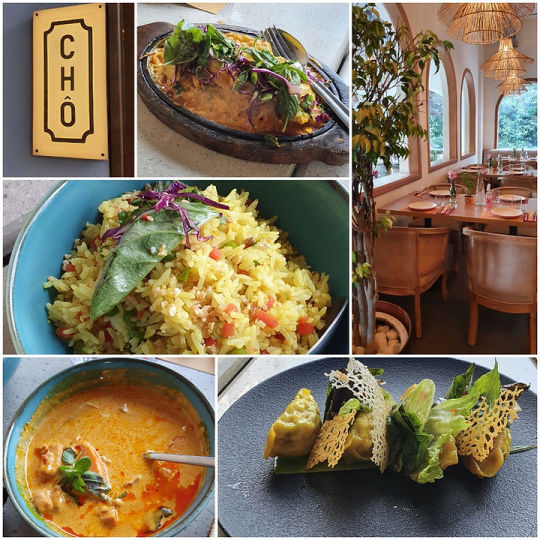
It is a very chic and classy Vietnamese restaurant with a warm light and camping vibe. They offer some lip-smacking Dimsums, pho and fish. Honestly, everything I tasted was mind-blowing and impressive. I don't want to spill all the beans so go and experience the warm hospitality, Visually touching presentation and of course the yummylicious food. My personal Recommendation:
Firecracker chicken
Turmeric chicken chili dumplings
Chicken pho
Turmeric fried rice
Cha cha sizzling fish
Vietnamese curry chicken
Location: H 5/1, FF LHS Kalkadass Marg, Mehrauli, New Delhi
Cost for 2 : Rs 3000 with Alcohol
Colocal Chocolates

If you have a sweet tooth then check out this last cafe with your gang. Colocal offers the finest Indian - grown cacao and has some smooth, rich chocolates in Delhi. You must have seen the famous campfire hot chocolate all over social media, And definitely, it's worth the hype. This should be on top of the list if you love love love chocolate.
(If you want some Insta worthy pictures then definitely hop on to this place)
location :
Khan market: 65, 1st Floor, Khan Market, New Delhi
Chattarpur: 100 Feet Road, The Dhan Mill Compound, Chhatarpur, New Delhi
Cost for 2: Rs 1000/-
I Hope after reading this you are craving for yummy and delicious food. If in case you are lazy and don't feel like reading then check out this video 😉
youtube
3 notes
·
View notes
Text
Discover the Best Skincare Brands in Nepal with Lifolab Asia

The variety of skincare brands in Nepal has grown significantly in recent years, with more and more companies providing premium goods that meet the various demands of Nepalese customers. Among these, Lifolab Asia is a well-known brand for cosmeceutical skincare products that produce noticeable effects. Lifolab Asia is the brand to trust if you want to improve your skincare regimen with products that work and are supported by science.
Why Skincare Matters in Nepal
Nepal’s unique climate, ranging from the chilly heights of the Himalayas to the warmer, humid lowlands, can have a significant impact on your skin. These varying conditions, coupled with pollution, UV exposure, and lifestyle factors, make it crucial to choose skincare products that not only hydrate and nourish but also protect the skin from environmental stressors.
A growing number of people are becoming aware of the importance of using high-quality skincare products that are tailored to the specific needs of their skin. As more skincare brands in Nepal emerge, it is essential to focus on those that provide effective solutions backed by science and research.
Lifolab Asia Leading the Way in Skincare Innovation
Lifolab Asia has earned its reputation as one of the most reliable skincare brands in Nepal by offering products that combine the best of nature and science. The brand’s focus on cosmeceuticals—skincare products that provide both cosmetic and therapeutic benefits—makes it a standout in the market. With a commitment to quality, safety, and effectiveness, Lifolab Asia provides skincare solutions for every skin type, ensuring you achieve radiant and healthy skin.
Key Features of Lifolab Asia Skincare Products:
Research-Based Formulas: Each product is developed using the latest dermatological research to ensure safety and efficacy.
Skin-Nourishing Ingredients: The products are packed with active ingredients like vitamins, peptides, and antioxidants that nourish and repair the skin.
Gentle Yet Effective: Lifolab Asia focuses on creating products that provide results without irritating or over-drying the skin.
Broad Range of Products: Whether you're dealing with acne, dryness, pigmentation, or simply want to maintain a youthful glow, Lifolab Asia has a product for you.
Best-Selling Products by Lifolab Asia
1. Lifolab Asia Brightening Serum
This serum is perfect for those looking to brighten dull skin and even out skin tone. Infused with potent antioxidants and vitamin C, it reduces the appearance of dark spots and hyperpigmentation, leaving your skin glowing and radiant.
2. Lifolab Asia Anti-Aging Cream
Packed with peptides and collagen-boosting ingredients, this anti-aging cream works wonders in reducing fine lines and wrinkles. It nourishes and restores the skin’s elasticity, giving you a youthful appearance.
3. Lifolab Asia Hydrating Moisturizer
Ideal for dry skin, this moisturizer provides deep hydration without being greasy. It helps maintain the skin's moisture barrier, preventing dryness and ensuring long-lasting hydration throughout the day.
4. Lifolab Asia Acne Treatment Gel
Targeting acne and blemishes, this treatment gel reduces inflammation, fights bacteria, and prevents future breakouts. It is an essential part of any acne-fighting skincare routine.
Why Choose Lifolab Asia Among Other Skincare Brands in Nepal?
When it comes to skincare brands in Nepal, Lifolab Asia offers distinct advantages that make it a top choice for many:
Clinically Tested Products: All Lifolab Asia products are dermatologically tested and free from harmful chemicals like parabens and sulfates, ensuring that your skin gets the best care without any adverse effects.
Affordable Luxury: Lifolab Asia provides high-end skincare solutions at affordable prices, making luxury skincare accessible to everyone.
Localized Solutions: Understanding the unique skin needs of Nepali people, Lifolab Asia designs products that cater specifically to the local environment and skincare challenges.
How to Incorporate Lifolab Asia Products into Your Skincare Routine
To get the most out of Lifolab Asia products, it’s important to establish a consistent skincare routine:
Cleansing: Start with a gentle cleanser to remove impurities without stripping the skin of its natural oils.
Toning: Apply a toner to balance your skin’s pH levels.
Serum or Treatment: Use a brightening serum or acne treatment gel based on your skin needs.
Moisturizing: Finish with a hydrating moisturizer to lock in moisture and keep your skin nourished.
Customer Reviews
"I’ve been using Lifolab Asia products for a few months now, and I can already see a significant improvement in my skin. My acne scars are fading, and my skin feels smoother and more hydrated!" – Priya Sharma, Kathmandu
"Lifolab Asia’s brightening serum has become my favorite product. It’s light, absorbs quickly, and really brightens up my complexion. Highly recommend it to anyone struggling with pigmentation!" – Ramesh Koirala, Pokhara
Final Thoughts
As one of the leading skincare brands in Nepal, Lifolab Asia continues to innovate and provide high-quality skincare solutions that cater to all skin types. With its range of scientifically formulated products, you can achieve healthy, glowing skin without the hassle. Whether you're looking to fight acne, combat signs of aging, or simply maintain your skin's radiance, Lifolab Asia has got you covered.
Experience the best of skincare with Lifolab Asia today!
Shop Lifolab Asia products now and take the first step towards healthier, more beautiful skin!
#best cosmeceutical skincare brands#top derma companies in nigeria#derma co-products in nepal#derma products in nepal price#best skincare products in nepal#best popular skincare brands in nepal#popular skincare brands in nepal#dermatology services maldives#skincare products in nepal#"skincare clinics in the maldives
0 notes
Text
Handicraft Export From Nepal: Top 4 Handicrafts You Need To Check Out!
Ever felt awe and appreciation for the elaborate and complicated handicrafts from Nepal? This country has a culture of great appreciation for art and the arts, produce some of the most stylish decorative arts that can be found anywhere. Be it ethnic designs printed on traditional fabrics or marble for tiles, the handicraft export business in Nepal is flourishing with customers ever willing to make orders all over the world. So, what are the Nepali handicrafts which you can claim to be a must-see?!
Handwoven Pashmina Shawls
Pashmina shawls are among the top Handicraft exports from Nepal. These wraps are designed using goat wool from the Himalayan region which makes it warm and extremely soft. Nepali craftsmen put a lot of effort into creating these original shawls which have a lot of love and care put into them. The international market for pashmina shawls has also gone up as people have come to appreciate the quality and style of the shawls.
Traditional Thangka Paintings
Thangka paintings are yet another popular demand in Handicraft Export from Nepal. These beautiful and colourful paintings are created of a mythical hierarchy that worships these forms while meditating. Every aspect of the painting is thoroughly painted and expresses the hard work of the Nepalese. Some people collect them for aesthetic appeal, but they are also an integral part of the art culture in Nepal and thangka paintings are widely exported by the artists.
Metal Statues and Sculptures
Nether regions are also known for metal sculptures, of which statues of Buddha and other religious figures of Hinduism are the main types. Such figures are crafted using techniques that have been used for centuries. The quality of the artwork and the artistic interpretation are sealed under glass making these works of art applicable both for cult and interior decoration. If you are a fan of sacred art, such metal statues will definitely complete your collection.
Conclusion
Nepal's rich heritage of crafts aids local artisans and also connects the world with its colourful culture. Be it a beautiful pashmina wrap or a deeply religious Thangka, such handicrafts occupy an exclusive place in everyone’s life. Therefore, if you want something special and valuable, you can get the handicrafts of Nepal without a doubt!
0 notes
Text
Ultimate Guide to the Annapurna Circuit Trek Tour

The Annapurna Circuit Trek Tour is a dream destination for adventurers, nature lovers, and trekking enthusiasts alike. This epic journey through the Annapurna mountain range offers awe-inspiring views, cultural immersion, and a sense of accomplishment unlike any other. Whether you’re a seasoned trekker or embarking on your first major adventure, this guide will equip you with everything you need to know about the Annapurna Circuit Trek Tour.
Why Choose the Annapurna Circuit Trek Tour?
The annapurna circuit trek tour is globally renowned for its diverse landscapes, from lush green valleys to arid high-altitude terrains. This trek not only offers unparalleled panoramic views of towering peaks but also takes you through charming villages, ancient monasteries, and vibrant local markets.
With varying altitudes and breathtaking scenery, the Annapurna Circuit is an adventure that will challenge you physically while rewarding you emotionally and spiritually.
Key Highlights of the Annapurna Circuit Trek
Mesmerizing Views
The trek offers spectacular views of peaks like Annapurna I, II, III, and IV, as well as Mount Dhaulagiri, Tilicho Peak, and Machhapuchhre (Fishtail Mountain).
Thrilling Passes
Crossing the Thorong La Pass, one of the world’s highest trekking passes at 5,416 meters, is a major highlight.
Cultural Richness
The Annapurna Circuit immerses you in Nepalese and Tibetan cultures, with opportunities to explore Buddhist monasteries and experience the hospitality of local communities.
Tilicho Lake
Often considered an add-on to the circuit, Tilicho Lake is one of the highest-altitude lakes in the world and offers a serene, surreal experience.
Best Time to Visit the Annapurna Circuit
Spring (March to May)
Spring is a popular time for trekking due to pleasant temperatures and blooming rhododendrons that paint the trails in vibrant colors.
Autumn (September to November)
Autumn is considered the best season for trekking, offering clear skies, stable weather, and incredible mountain views.
Avoid Monsoon and Winter
The monsoon season (June to August) brings heavy rainfall, making trails slippery and challenging. Winter (December to February) can be harsh, with heavy snowfall at higher altitudes.
Preparing for the Annapurna Circuit Trek
Physical Fitness
Building endurance and strength is crucial. Start training with cardio exercises, hiking, and strength training a few months before your trek.
Permits Required
You’ll need two permits:
TIMS (Trekkers’ Information Management System) Card
Annapurna Conservation Area Permit (ACAP)
Packing Essentials
Clothing: Layered clothing for varying temperatures.
Gear: A sturdy backpack, trekking poles, and high-quality boots.
Miscellaneous: Sunscreen, water purification tablets, and first aid supplies.
Route Overview: A Day-by-Day Breakdown
Day 1: Arrival in Kathmandu
Explore the vibrant streets of Thamel and prepare for the trek.
Day 2-3: Drive to Besi Sahar and Trek to Chame
Start your trek with scenic views of waterfalls, lush forests, and terraced fields.
Day 4-6: Trek to Manang
Pass through picturesque villages like Pisang and Braga, with acclimatization stops to adjust to higher altitudes.
Day 7-9: Thorong Phedi and Thorong La Pass
The highlight of the trek is crossing the Thorong La Pass, where stunning views await. Descend to Muktinath, a sacred site for both Hindus and Buddhists.
Day 10-13: Trek to Jomsom and Return
Explore the unique landscapes of the Mustang region before heading back to Pokhara.
Accommodation and Food on the Trek
The Annapurna Circuit offers various accommodation options, from basic teahouses to more comfortable lodges. Meals typically include dal Bhat (lentil soup with rice), momos, and other traditional Nepalese dishes.
For cost savings:
Opt for combo meals offered by teahouses.
Carry some snacks to avoid overpaying at higher altitudes.
Trekking with OrangeDMC
For a seamless and unforgettable trekking experience, consider booking your Annapurna Circuit Trek Tour with OrangeDMC. This trusted travel company specializes in Himalayan treks and offers comprehensive packages that include guides, permits, and logistics. Their experienced team ensures your safety and comfort, allowing you to focus on the adventure ahead.
For more details, visit here: https://www.orangedmc.com/annapurna-circuit-trek-tour.html
Tips for Saving Money on the Trek
Accommodation
Negotiate room rates or stay at teahouses offering free accommodation if you dine there.
Food
Stick to local meals like dal bhat, which are filling and affordable. Avoid packaged foods, as prices increase with altitude.
Transport
Take shared jeeps or buses instead of private vehicles for cost-effective travel.
Challenges to Be Aware Of
Altitude Sickness
Acclimatize properly and stay hydrated to prevent altitude sickness. Carry medications like Diamox as a precaution.
Weather Conditions
Be prepared for unpredictable weather, especially at higher altitudes.
Physical Fatigue
Ensure you’re physically fit and take regular breaks during the trek.
Conclusion
The Annapurna Circuit Trek Tour is a once-in-a-lifetime experience that combines natural beauty, cultural richness, and a sense of adventure. Whether it’s the thrill of crossing Thorong La Pass or the serenity of Tilicho Lake, every moment on this trek is unforgettable. With proper planning, preparation, and the support of a reliable company like OrangeDMC, your annapurna tour will be both safe and rewarding.
0 notes